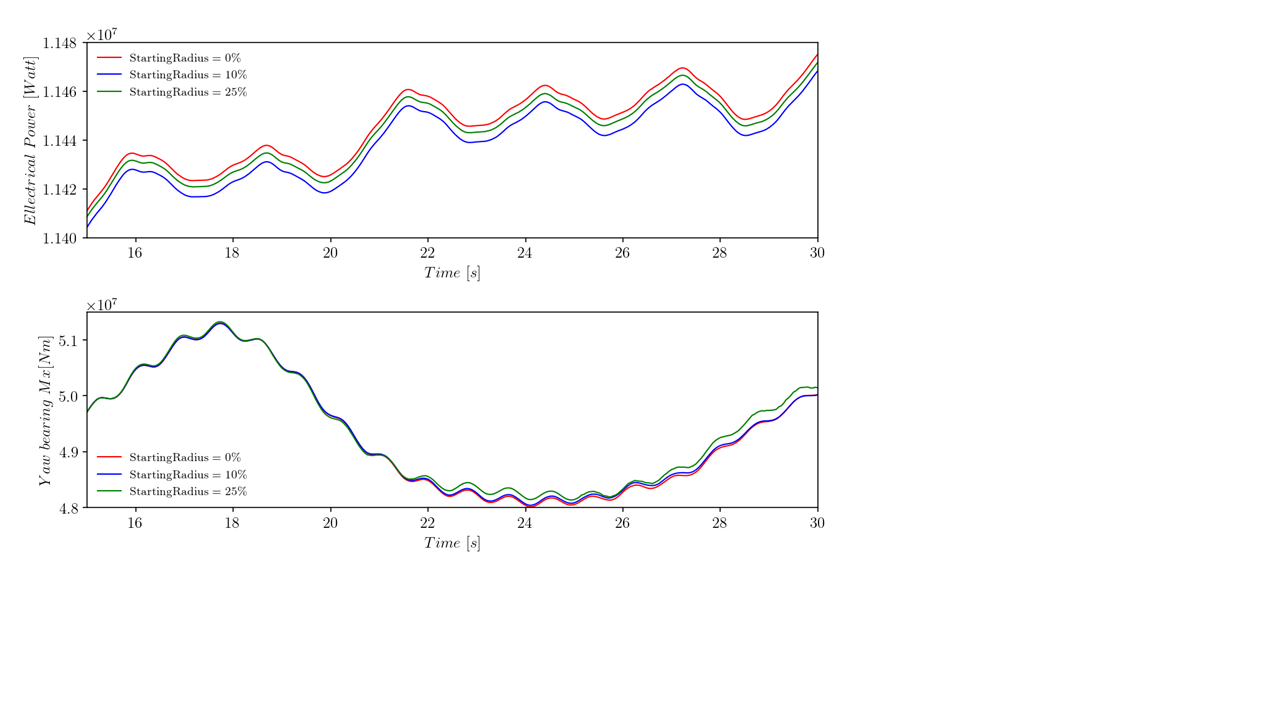Users are allowed to exclude the root area from dynamic stall calculations using StartingRadius parameter. How much should we exclude?
Bladed versions affected: all Bladed versions supporting StartingRadius parameter. Note that StartingRadius = 0 can only be recreated using Bladed 4.14 onwards.
Date of last article update: 23 February 2023
Dynamic stall is a very complex physical phenomenon which can be modeled using engineering models. The dynamic stall calculations depend on the value of the normal force gradient and the zero lift angle of attack. Especially for the latter, it is not possible to obtain this value from the cylindrical portion where lift is always zero. In fact, dynamic stall only applies to a lifting body and not to a cylinder. In Bladed, the current default value of StartingRadius is 25% of the blade length. However, recent studies found that modern wind turbine blades can adopt lifting sections even to below this criterion. See below figure where the electrical power of the IEA 15 MW wind turbine is still affected when StartingRadius is decreased (upper figure). The load during an IEC wind gust is also still affected (lower figure). Therefore, dynamic stall calculations will be of importance. Users are advised to decrease the value of StartingRadius as small as possible but to exclude the cylindrical sections. Starting from Bladed 4.14, a new method will be adopted where the users do not need to adjust StartingRadius manually. this can be done by simply setting it to zero (will be set as a new default in Bladed 4.14 onwards). Bladed will automatically determine to exclude dynamic stall effects from the cylindrical parts.
